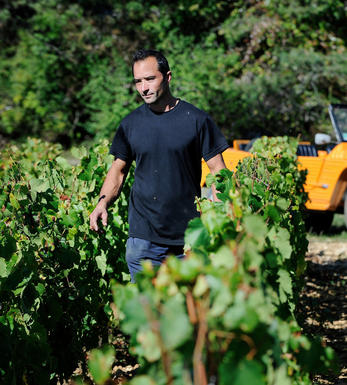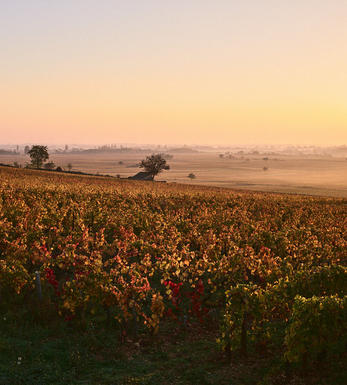
2022 Pommard, Clos des Arvelets, 1er Cru, Domaine Camus-Bruchon & Fils, Burgundy

Critics reviews
The 2022 Pommard Clos des Arvelets 1er Cru has an attractive bouquet with wild strawberries, wilted rose petals, and light incense aromas that blossom in the glass. The palate is medium-bodied with a fine-boned structure. It is quite saline in the mouth, with firm grip and a slightly grainy texture, offering plenty of matière on the finish. This should age well in bottle.
Drink 2025 - 2038
Neal Martin, Vinous (November 2023)
About this WINE

Domaine Camus-Bruchon
Domaine Camus-Bruchon is a small, family-owned winery located in Savigny-lès-Beaune, in the Côte de Beaune region of Burgundy. The estate was founded in 1910 by Charles Camus and has been passed down through the generations. Today, it is run by the fourth generation of the Camus family, brothers Laurent and Dominique Camus.
The estate consists of approximately 15 hectares (37 acres) of vineyards, primarily in the Savigny-lès-Beaune appellation but also in the neighbouring appellations of Pernand Vergelesses and Aloxe Corton.
The estate produces a range of wines from Pinot Noir and Chardonnay, including red and white Savigny-lès-Beaune, and Premier Cru and Grand Cru wines from the neighbouring appellations. Traditional winemaking techniques are favoured, including hand-harvesting, natural fermentation, and ageing in French oak barrels.

Savigny-lès-Beaune
Savigny-lès-Beaune is situated within France’s larger Burgundy wine region, celebrated for its intricate terroir-driven winemaking traditions. The village lies just north of the town of Beaune and is known for producing red and white wines, although red wines dominate in quantity.
The reds are primarily made from Pinot Noir grapes, which thrive in the region’s limestone and clay-rich soils. These wines often balance ripe fruit flavours like red cherries and raspberries, earthy forest floor notes, and a refined structure of moderate tannins and vibrant acidity.
The whites from Chardonnay grapes display a refreshing acidity and diverse flavours, from zesty citrus and green apple to more complex hints of hazelnuts, white flowers, and mineral nuances.
Due to its hilly landscape, Savigny-lès-Beaune benefits from a mosaic of microclimates and various soil types, allowing for subtle variations in the wines produced across its multiple vineyards or “climats.” These climatic and soil distinctions contribute to the unique character of each wine, emphasizing the concept of terroir – the idea that a wine’s flavour and personality are intricately tied to its specific place of origin.
The winemakers in Savigny-lès-Beaune are deeply committed to traditional winemaking methods, paying meticulous attention to detail during vineyard management and the winemaking process. Hand-harvesting, careful sorting of grapes, and gentle extraction methods are standard practices, ensuring that the wines reflect the essence of the terroir while maintaining a sense of finesse and elegance.

Pinot Noir
Pinot Noir is probably the most frustrating, and at times infuriating, wine grape in the world. However when it is successful, it can produce some of the most sublime wines known to man. This thin-skinned grape which grows in small, tight bunches performs well on well-drained, deepish limestone based subsoils as are found on Burgundy's Côte d'Or.
Pinot Noir is more susceptible than other varieties to over cropping - concentration and varietal character disappear rapidly if yields are excessive and yields as little as 25hl/ha are the norm for some climats of the Côte d`Or.
Because of the thinness of the skins, Pinot Noir wines are lighter in colour, body and tannins. However the best wines have grip, complexity and an intensity of fruit seldom found in wine from other grapes. Young Pinot Noir can smell almost sweet, redolent with freshly crushed raspberries, cherries and redcurrants. When mature, the best wines develop a sensuous, silky mouth feel with the fruit flavours deepening and gamey "sous-bois" nuances emerging.
The best examples are still found in Burgundy, although Pinot Noir`s key role in Champagne should not be forgotten. It is grown throughout the world with notable success in the Carneros and Russian River Valley districts of California, and the Martinborough and Central Otago regions of New Zealand.


Buying options
Add to wishlist
Description
This terraced vineyard faces south but has the cooling influence of two valleys. It has an interesting juxtaposition of spicy dark fruit and a menthol-like coolness. Three barrels were produced, one of which is new. There’s a pleasing intensity here, and a structure that is more limestone than iron. This is certainly a more elegant Pommard. Drink 2028-2040.
wine at a glance
Delivery and quality guarantee